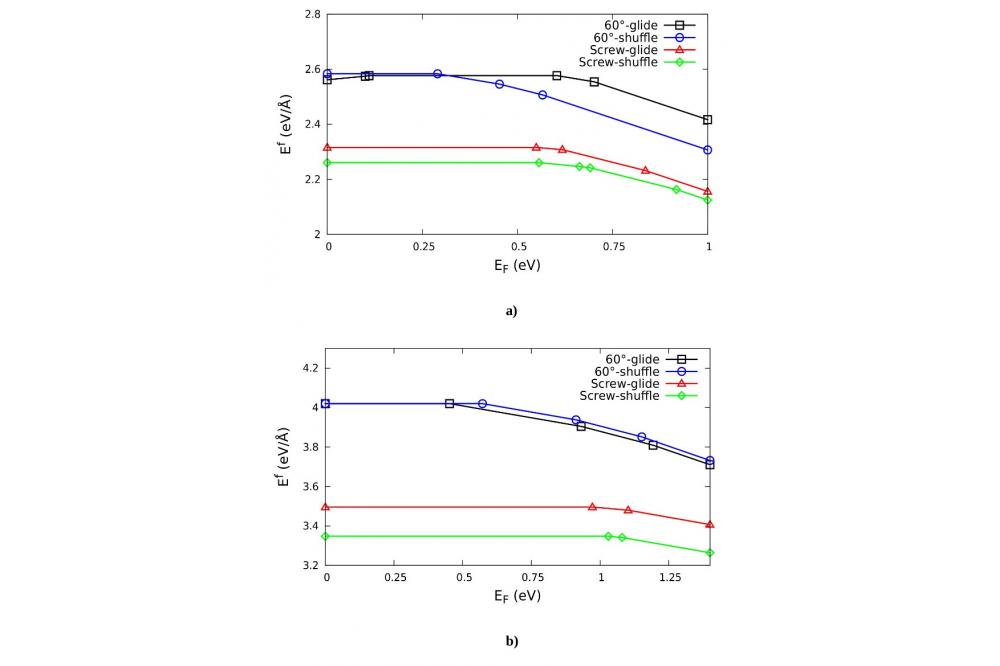Modelling of Extended Defects in CIGS Based Solar Cells
Einleitung
Chalcopyrite Cu(In,Ga)Se2 (CIGSe) are one of the most succesful materials used as absorber layer in thin-film solar cells[1,2]. The optical and electronic properties of these compounds can be tunned with Ga-In ratio and depend strongly on the presence of defects. Point defects and their properties have been studied extensively [3,4]. One further type of defect that has captured a great deal of attention are grain boundaries. Their properties are interesting since polycristalline CIGS-based solar cells overcome their crystalline counterparts[5,6]. In spite of substantial research efforts, a complete understanding of the physics behind the influence grain boundaries have on the device performace is still lacking. Besides grain boundaries, other extended defects have been identified. This includes twin boundaries, stacking faults and dislocations. However, no much theoretical research has been conducted in order to clarify the role played by dislocations in CIGS even when their presence is undeniable. By means of transmission electron microscopy, high dislocation densities up to 10^10 -10^11 cm^−2 were found in solar cells with power-conversion efficiencies up to more than 15% [7]. Contrary to what is found in poly-crystalline silicon[8,9], the fact that decent efficiencies are reached with such high presence of dislocations is a remarkable property and is necessary to answer wich electrical properties of dislocations in CIGSe layers allow for such behavior.
Methoden
The resources appointed in the Lichtenberg cluster have been used to study the structural parameters, electronic structure and formation energies of the relaxed glide and shuffle dislocation cores with smallest Burgers vectors (b) in a chalcopyrite structure, the screw and the 60° types. To achieve such goal we have used density functional theory (DFT) and a Hubbard corrected local density approximation (LDA+U)[10] approach as implemented in the Vienna Ab-Initio Simulation Package VASP[11].
Ergebnisse
The results obtained show that in both CuInSe_2 and CuGaSe_2, the ternary parent compounds of CIGSe, screw dislocations present distorted bonds but the atoms configurations after relaxation are such that full coordination is maintained. On the other hand, relaxed structures of the 60◦ mixed dislocations do not show reconstruction and dangling bonds are patent. As expected, DOS of the relaxed core structures show shallow defect states for all structures under study and two deep defect states for the glide 60◦ dislocation. The defect states were further studied by means of the charge density associated with them. A clear feature observed for all states was localization in the volume surrounding the cores.
Finally, the calculated core formation energies, figure 1, show that for the positive doping regime (p-type), only the glide 60° dislocations in CuInSe_2 prefer a positively charged state. For the same regime and in the most relevant region of it, all the other dislocation types studied here are charge neutral and therefore, electrically inactive.




